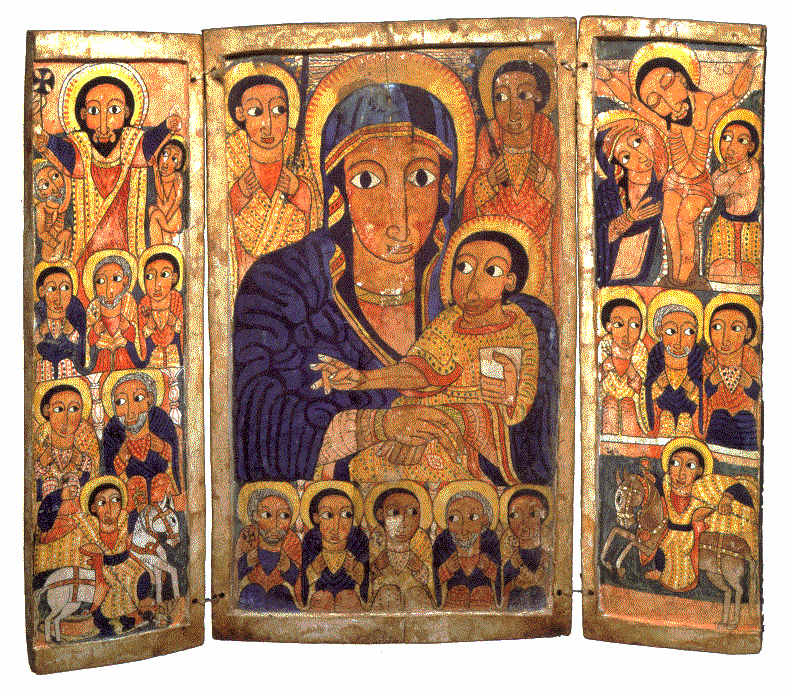
Full of Grace
Encountering Mary in
Faith, Art, and Life
Judith Dupré
(Random House)

Mary had a tough call. The angel appears and tells her that she's going to be the Mother of God. If someone had appeared and told me to do that, I certainly would have said 'no.' Or better, 'No!'It can be (and is) a very demanding job, being the Holy Virgin. And ultimately, I think, it's fruitless.
You have to put up with all those questions from your family and friends. "He told you what?" Plus there is the business of finding an appropriate delivery room, which in this case turned out to be a stable with manger with all these animals mooning (and mooing) about.
Then there's the matter of the illegal immigrants arriving, in their turbans and robes, telling you they've come to worship you and your babe. It would be a time to try one's soul.
Plus you know what they do to the prophets and Saviors of the world: ask Buddha (poisoned), Socrates (enforced suicide), Zarathustra (murdered at the altar). First they kill you; then they sanctify you. It's no bed of roses being a divine, perhaps even worse being a Divine Mother.
But, long after she had disappeared from the scene, people begin to get worked up about Maria. They made engravings and portals and statues ... whole walls and ceilings of frescos such that she would never recognize herself with all those clean and luxurious robes. She was just a poor simple girl from the Levant, not all that beautiful (they thought: most men didn't like her dark skin) ... and even after all these things came to pass, her old father Joachim would raise his eyebrows, her mother Anne would tell him to mind his own business, and even Joseph would ask, "He had wings?" "And he told you that you had to do what?" "Oh, Miriam ..."
§ § § Whatever it cost her, she left us a fine heritage. And the editor of Full of Grace gives us more than two dozen beguiling essays, dealing with the Annunciation, the Council of Ephesus, Mary in the Qur'an --- Mary above all the women of creation --- and the many miraculous holy sites dedicated to her, at Guadeloupe, Lourdes, Reims. Dupré and her editor have selected a hundred or so gorgeous paintings, pictures, oils, triptychs, engravings, bas-reliefs, drawings, bronzes, and frescos.
Forget your beliefs or prejudices. The Mother of Us All has given us a rich heritage of commemoration, if nothing else, of pure motherhood, including hundreds of crèches, altarpieces, mosaics (in Istanbul, Rome, and Ephesus) and portals (don't miss the ones at Notre-Dame and Chartres.)
Some of the paintings could be considered true to what might have been Mary's appearance twenty centuries ago. "Our Lady of Czestochowa" in Jasno Góra, Poland pictures her and the holy baby as high-cheeked and dark. The same with the Virgin of Juquila --- rumored to have been blackened by a fire that could not consume her statue.
Ms. Dupré is a lively writer, manages to smuggle into the book her own childhood, a Palestinian hair salon, the "Song of Solomon," a refugee camp in Chad, a reading from "The Magnificat" --- He has sent the rich away empty --- and even a recipe for her aunt's pepper biscuits, revealed at her funeral Mass to be chock full of fennel seed.
It's a kindly book, worth giving to someone who may not be keen on Mary, but who has some affection for a choice production.
--- Lolita Lark